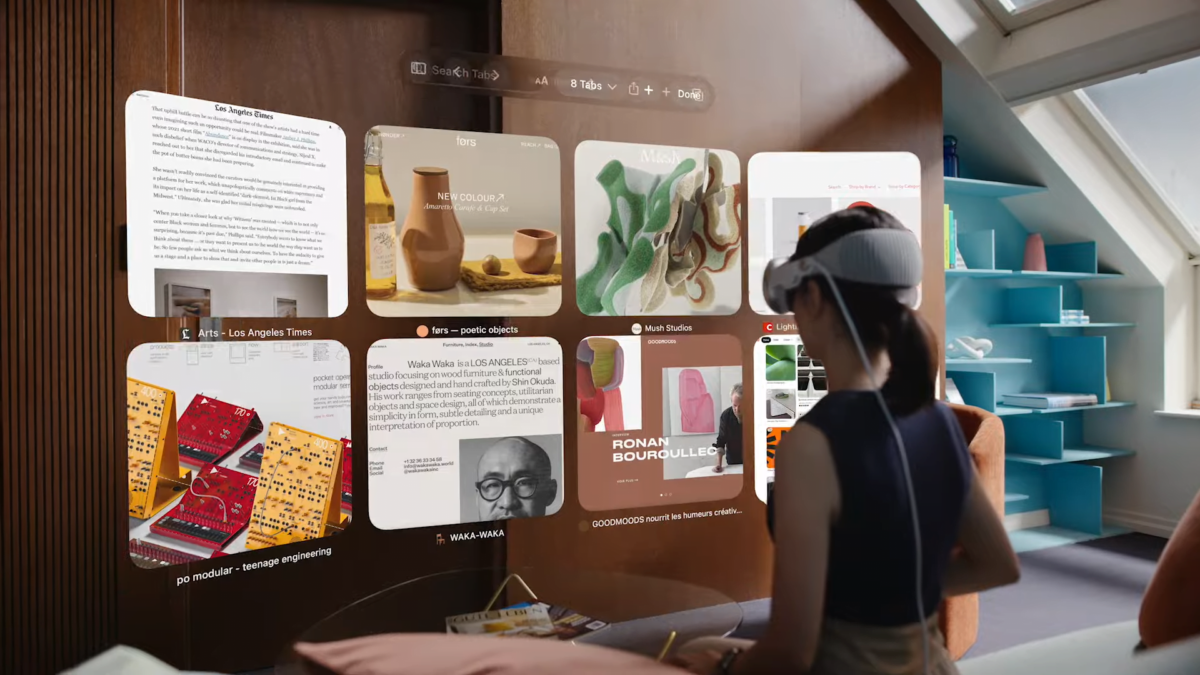Does Apple Vision Pro really offer seamless "spatial computing"?

Can Apple's XR headset deliver on the promise of effortless "spatial computing" that its competitors have struggled with?
This is exactly how I've always imagined walking around my home with a slim, high-resolution mixed reality headset. Multiple augmented reality windows floating in the real home, everything in its place and synchronised.
Even for me, an Apple abstainer, the presentation of the new mixed reality headset was a mesmerising experience. This is how I already imagined the distant future of Meta's Horizon Workrooms when I first read about it.
Finally, a smooth XR experience?
No multiple booting, no multiple tedious drawing in of the Quest 2 playfield, no fiddling with the driver on the PC. At least in the flawless, glossy dream world of Apple's trailers, the concept seems like a smooth vision that even I, as a VR gamer, could wander through for a while.
Virtual screens from the Apple headset or wirelessly connected Mac can be freely arranged and enlarged. | Video: Apple
Sure, scalable screens in the virtual office and meetings with spatial avatars are nothing new. And 3D video is even less so. But the elegance of the interaction and Apple's vehement focus on eye and hand control make me curious.
In particular, the additional built-in R1 chip could pay off for low-latency capture. It combines data from twelve cameras, five sensors and six microphones with a delay of just 12 milliseconds. It remains to be seen how directly and smoothly this will work in practice.
But the idea is very appealing. The biggest obstacle to widespread adoption of VR and AR is still the number of small distractions during setup, adjustment and switching between applications.
I have to admit, though, that I haven't had a chance to try out the Quest Pro (or even the planned Quest 3 for that matter). So perhaps my opinion is clouded by the sometimes bumpy experience of the Quest 2, which is still a great package for the price.
Not a VR headset for gamers
After all, it costs about a tenth of the price of Apple's new headset, which may also be experiencing teething troubles with a two-hour battery life and the M2 chip's considerable heat generation.
At a price of $3,499, Apple's hardware will be completely uninteresting to the vast majority of gamers - myself included - for the time being. However, if you look back at Apple's previous launches into new product categories, this doesn't seem all that unusual. The Lisa home computer, for example, cost around $10,000 in 1980, and the first Mac cost around $2,500 in 1984.
Adjusted for inflation, that's considerably more than the new headset. Even in the 1980s, I felt that my uncle's Mac, which he used for work, was a completely different class of device than the C64 I used to play games on with my mate. Apple could set an expensive, but already relatively well-functioning baseline on which cheaper mixed reality headsets and competitors could later build.
However, I would have liked to see a little more courage for new entertainment concepts at the Vision Pro presentation. I would definitely like to experiment with eye and hand tracking inputs in AR games.
Even when the Blackberry keyboard was pretty much replaced by the iPhone's capacitive touch screen (what, no stylus?), few could have predicted the path that mobile gaming would take.
More hand and eye tracking, please!
Rogue Ascent for Quest 2, Rez Infinite with the lightning-fast eye tracking of the PSVR2, and an upcoming eye tracking title for the PSVR2 that I'm not allowed to talk about for embargo reasons, prove just how cool hand and eye input can be. The latter also benefit from the precise haptic feedback of the VR controllers.
First impressions of Apple's new hand and eye input are enthusiastic about the intuitive implementation. Ben Lang of RoadtoVR and Youtuber Marques Brownlee describe a natural system where they simply point at things like icons with their eyes and confirm the selection with a reliable pinch gesture.
In my opinion, natural input in free space with hands, eyes and voice makes much more sense than typing on an annoyingly small smartphone rectangle - with or without a physical Blackberry keyboard.
Perhaps Apple will achieve a similar paradigm shift in spatial computing with cheaper successor headsets. Or perhaps the more affordable competition will have to do it - much like early Android smartphones.
Note: Links to online stores in articles can be so-called affiliate links. If you buy through this link, MIXED receives a commission from the provider. For you the price does not change.